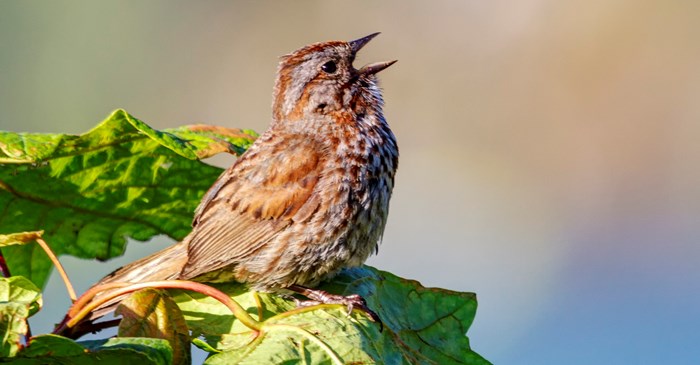After watching those birds at the feeder for awhile, you might notice that the same bird is capable of making different sounds. An American robin, for example, sings a melodic little riff in pairs of ascending and descending notes. But then you’ll notice a very different noise altogether as the female robin hops urgently across your lawn, worm dangling from her beak; she signals to her scattered fledglings with a piping call.
Birds are ingenious and masterful communicators, sometimes able to sound two notes simultaneously, enabling them to create their signature sound. Many songbirds have a repertoire — a lineup that includes a song and various calls to convey different messages to others within the species and beyond.
Songs: A bird species' long, complex vocalization usually belongs in the repertoire of the male. Many will sing to woo a mate, as that signals health and vitality. And many songbirds sing to announce their presence to other males, warning them off especially during the nesting period. Birdsong always breaks out at dawn and sometimes after a storm. No one is exactly sure why this is, but some researchers believe they are reaffirming their territories.
Calls: You have probably heard many of these while working or relaxing in the yard, a series of rapid, insistent calls from the tree branches overhead. Birds call to their mates and chicks and members of their flocks for a host of reasons. Maybe you wandered into a bird’s territory and you are being scolded, or the birds are sending some other sort of alert.
Explore the many sounds of your favorite backyard bird with this handy bird guide put together by the Cornell Lab of Ornithology. Then settle in to listen and watch as the birds gather at your feeder to eat.
